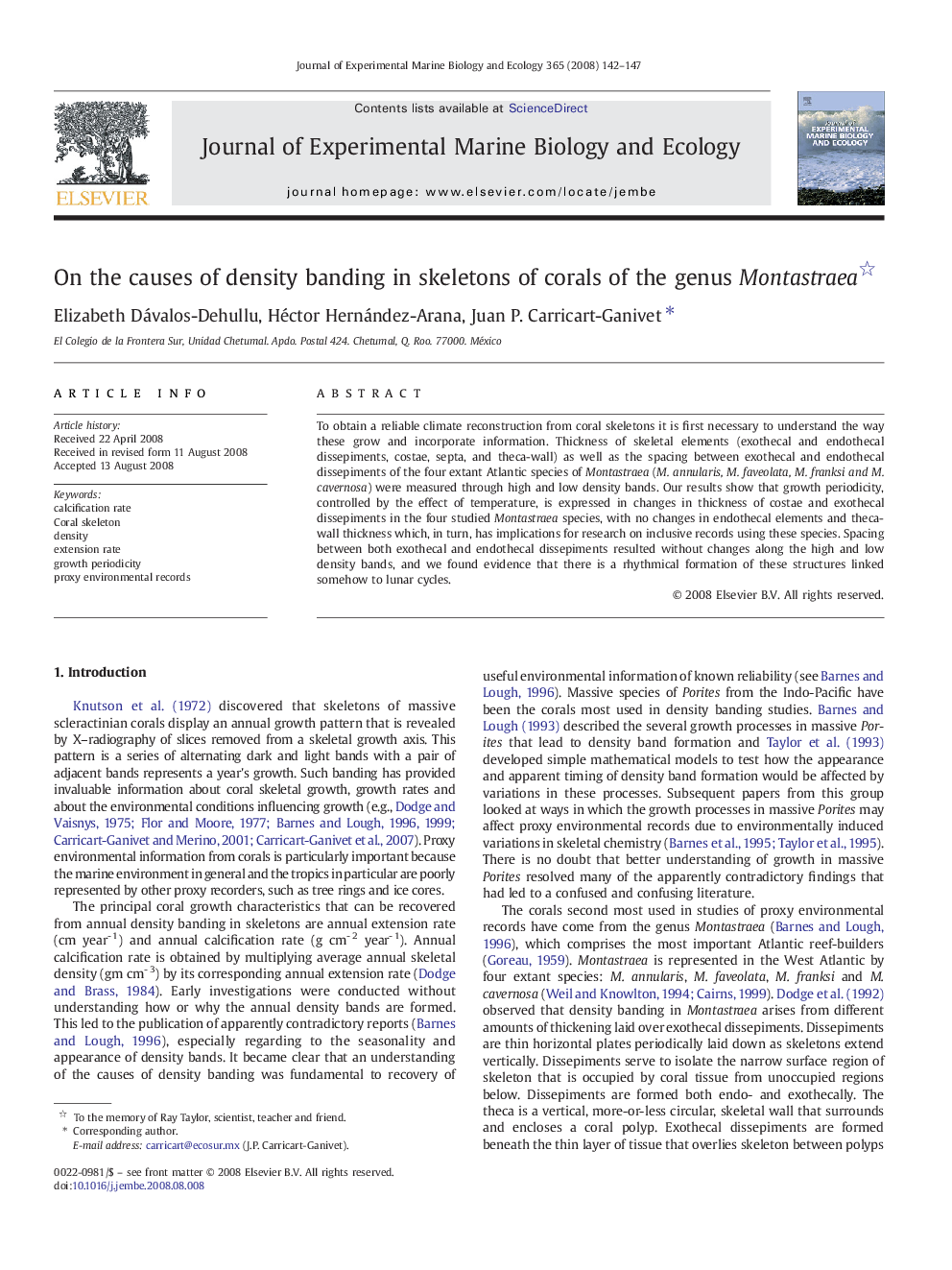| Article ID | Journal | Published Year | Pages | File Type |
|---|---|---|---|---|
| 4397219 | Journal of Experimental Marine Biology and Ecology | 2008 | 6 Pages |
Abstract
To obtain a reliable climate reconstruction from coral skeletons it is first necessary to understand the way these grow and incorporate information. Thickness of skeletal elements (exothecal and endothecal dissepiments, costae, septa, and theca-wall) as well as the spacing between exothecal and endothecal dissepiments of the four extant Atlantic species of Montastraea (M. annularis, M. faveolata, M. franksi and M. cavernosa) were measured through high and low density bands. Our results show that growth periodicity, controlled by the effect of temperature, is expressed in changes in thickness of costae and exothecal dissepiments in the four studied Montastraea species, with no changes in endothecal elements and theca-wall thickness which, in turn, has implications for research on inclusive records using these species. Spacing between both exothecal and endothecal dissepiments resulted without changes along the high and low density bands, and we found evidence that there is a rhythmical formation of these structures linked somehow to lunar cycles.
Related Topics
Life Sciences
Agricultural and Biological Sciences
Aquatic Science
Authors
Elizabeth Dávalos-Dehullu, Héctor Hernández-Arana, Juan P. Carricart-Ganivet,
